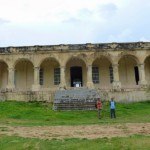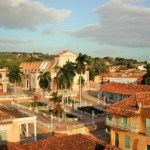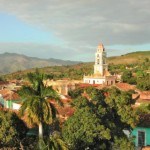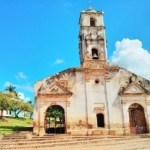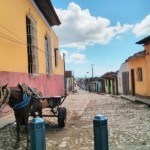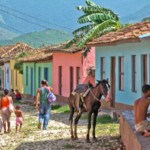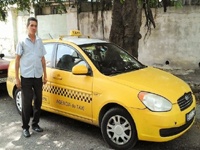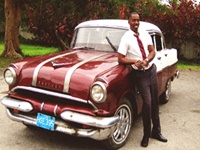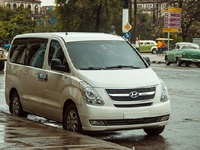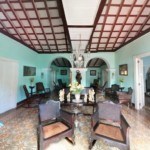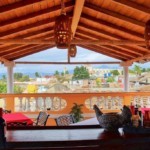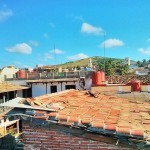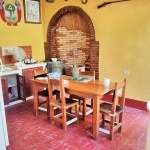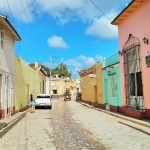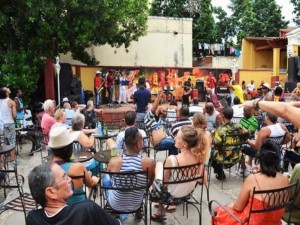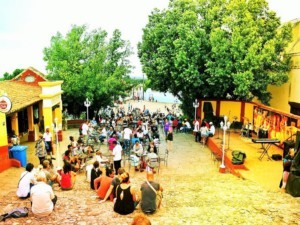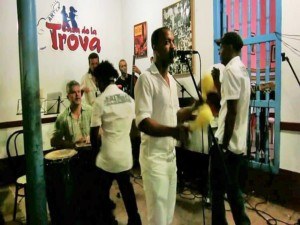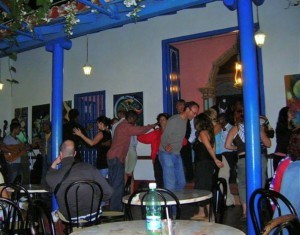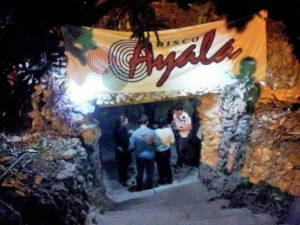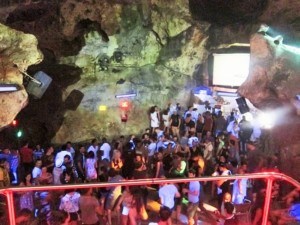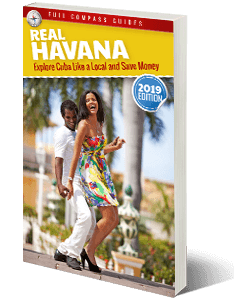Trinidad, Cuba – Free Online Guidebook
Trinidad is a small town, located on the south coast of Cuba, near the midpoint of the island. It is one of the oldest towns in Cuba, with a history dating back more than 500 years. The town is very well preserved, with mostly original architecture, tight, winding streets, paved with cobblestones, and a picturesque surrounding of hills, valleys, farms and even a nearby beach. It is one of the most popular excursion destinations for tourists visiting Havana.
State organized bus tours, usually lasting a day or two are offered by many Cuban tour operators and can be purchased in most hotel lobbies. The tours depart from Havana and go to Trinidad on a daily basis. Official excursion prices range from about 200 CUC to over 400 CUC per person, depending on the duration and itinerary of the trip.
With a little bit of planning, you can organize your own Trinidad excursion for considerably less. If you are eager to view a charming, old world town that has been listed as a UNESCO World Heritage site since 1988, then Trinidad is the place to go.
Getting From Havana to Trinidad
Taking the Bus
Despite being 365 kilometers (225 miles) away from Havana, it is relatively easy to get to Trinidad, even for a novice traveler. You can easily take the Viazul bus service, which operates daily routes from Havana to Trinidad. If you book ahead of time, you will have no problem getting a seat. The Viazul bus terminal in Havana is located at the corner of Avenida 26 and Avenida Zoologico, in the Nuevo Vedado neighborhood.
You can book your tickets directly at the Viazul bus terminal, and it is advised to book at least a few days before traveling. An even better option is to book and pay for your tickets online, at www.Viazul.com. On the day of travel, you simply arrive at the bus terminal 30 minutes before your departure time to check your bags (if you are traveling with luggage) and you will soon be seated in a modern, air conditioned bus, making your way towards your destination. The bus ride from Havana to Trinidad costs 25 CUC per person and the trip takes about 6 hours. The bus makes stops at most major towns along the way to drop off and take on new passengers. This is the main reason for the extended trip duration. Once in Trinidad, the bus terminal is just beside the town center, within easy walking distance to most popular locations.
Hire a Taxi
Hiring a taxi to get you from Havana to Trinidad is more expensive than taking the bus, but the advantage is that you can set your own departure schedule and your travel time is reduced significantly, with most taxis making the direct trip in 4 hours or less. Your taxi options are varied and depend on what kind of trip you want to experience and how many other passengers you are traveling with. Taxis always charge by the carload, so it is more affordable to share the ride with other tourists and split the fare accordingly.
- Yellow Taxi
- Classic American
- Mini-bus
A yellow, air conditioned, modern taxi is the most convenient option for most people. If you have 4 passengers in the car, the price is only marginally more expensive than the Viazul, on a per person basis.
There are also classic American car taxis which do the trip. The disadvantage with these vehicles is that they are not air conditioned, and the windows are usually rolled all the way down for the duration of the trip, for ventilation. For a long distance trip like this, the wind coming through the windows can be unpleasant. Furthermore, as these vehicles are old, there is an increased risk of breakdown on the highway.
If you are traveling in a larger group, you can also consider hiring a minibus to take your group to Trinidad. An air conditioned minibus can usually seat 10 to 14 passengers. Minibus taxis are rare in Cuba and are often tough to find.
Finding A Taxi
We can help you book your taxi from Havana to Trinidad. We offer some of the lowest taxi prices available with many different vehicle and trip options. A modern, air conditioned taxi, from Havana to Trinidad, with up to 4 passengers, is only 160 CUC, with door to door pickup and drop-off.
Reserve your Taxi From Havana to Trinidad Now
Exploring the Town of Trinidad
Old Town
The Trinidad town center is commonly referred to as the Old Town. It is very easy to identify and most foreigners who visit Trinidad spend most of their time in this area. The streets are paved in uneven cobblestones. The houses and buildings are almost all hundreds of years old. This was the the first part of the town which was constructed when the area was originally settled, over 500 years ago. It has been well preserved and over the years many of the buildings have been carefully restored. There are strict preservation laws enacted by the Cuban government to ensure that any renovations to the buildings within this area maintain the architectural integrity of the original structures. Effectively, the Old Town is a giant museum, and this is what makes it such a strong tourist draw. The Old Town is also gated off to vehicle traffic. Only walking and biking is permitted.
The streets in the Old Town are tight and winding, to a foreigner it can seem chaotic. Despite the small overall area of this neighborhood (less than 500 meters in diameter) it is very easy to become disoriented and lost. This plan was by design, in order to confuse and impede pirates, which regularly invaded the town throughout the 17th century.
The Old Town is built on a gently sloping hill. At the center of town, located near the top of the hill, is the Plaza Mayor, the central town square. The plaza is surrounded by dozens of historically significant buildings, most of which have been converted to museums. If you enjoy history, you will find this an ideal location to explore. In front of the plaza is the imposing Church of the Holy Trinity (Iglesia Parroquial de la Santísima Trinidad). To the right of the church (one block north of the plaza) is the Church and Convent of Saint Francis (Iglesia y Convento de San Francisco). This church, with its tall, brightly painted bell tower is one of Trinidad’s most recognizable landmarks, prominently featured on advertisements and postcards, as well as on Cuba’s 25 cent CUC coin. Also in the area you will see several outdoor street fairs where local sellers have set up stalls selling crafts, linens, souvenirs and clothes.
Eastern Trinidad
Walking south-east, out of the gated Old Town, you will soon be entering a decidedly poorer area. Although the streets are still paved with cobblestones, you will notice cars driving over them and a lot fewer tourists. Most of the houses in this area maintain the same architecture as those in the Old Town, but lack restoration.
This neighborhood of eastern Trinidad is a great area to explore if you want to get away from the tourist crowds and see how the locals live. The most prominent attraction in the area is the Iglesia de Santa Ana, facing a large square (Plaza Santa Ana). The church is in ruins, but there is a small museum and restaurant/bar nearby. The square has historical significance, as the former location of a large Spanish prison.
The streets in eastern Trinidad all gently slope away from the Old Town and towards the ocean, which, on a clear day, can be seen in the distance. The small port town of Casilda, located about 4 kilometers south of Trinidad, connected by a small highway, can also be seen.
New Town
If you are entering Trinidad by taxi or bus, then the first neighborhood that you will likely pass through is the New Town. As the name suggests, this area is composed of mostly newer buildings, which are not as architecturally ornate as anything in the rest of the city. If you do not have a fixed destination in mind when arriving in Trinidad, it is common for taxi drivers to drop you off at the Parque Central Cespedes. This is a small plaza, located in front of the Iberostar Grand Hotel Trinidad, (one of the most prominent hotels in the city). This area is generally considered as the border between the New Town and the beginning of the Old Town.
While there is not much of historic importance located in the newer part of town, it can be a good place to explore and people watch, as this is where the vast majority of locals live and spend their days. Street food vendors and small paladares also line the main streets in this area and prices for food and drinks are a fraction of what you will pay in the Old Town. If only for that, it is well worth spending some time in this neighborhood.
Note: Trinidad’s street hustlers (jineteros) are notorious for their brazenness, persistence and organization. The situation is far worse here than anywhere else in Cuba, including Havana. It is highly advisable to be suspicious of anybody you meet on the street offering you assistance or advice relating to bars, restaurants, entertainment options or casas particulares. They almost certainly have an angle where they will be able to scam a bit of money out of you by the end of the day. Although these scams are generally harmless and petty, they can be tedious, time consuming and off-putting. One of the most common scams occurs when tourists have just arrived in the town and are searching for their pre-booked accommodations. Hustlers wait at the Viazul terminal and greet unsuspecting tourists, as they exit the bus. They explain, usually in well spoken English, that they were sent by the casa owner to escort the tourist directly to their casa. Inevitably, if you follow one of these hustlers, you will arrive at an entirely different casa than that which you booked, and the hustler will always make a healthy commission from your misfortune. The hustlers are so well versed in their trade that they sometimes even scam Cuban taxi drivers who might get lost in Trinidad’s winding streets, convincing the drivers to drop off tourists at the wrong casas. Always confirm that the casa you are staying in, is in fact the actual casa that you made reservations for. And, if you meet somebody at the bus station who claims to be sent from your casa landlord, never tell them your name and casa details first. If they were genuinely sent from the landlord to escort you to the casa, make them confirm your details first.
Casas Particulares in Trinidad
As Trinidad is a very popular tourist destination, and has been for many years, there is an abundance of good casas particulares throughout the town. In the historic center of Trinidad many of the rental units are located inside historic mansions. These mansions retain most of their old world architectural details, including stone columns, vaulted ceilings, wooden beams and moldings, and expansive inner courtyards allowing natural light and fresh cross breezes to flow. In these mansions, while you have a private room with its own locking door, you will often share the common areas of the house with the landlords and other guests.
Outside of the town center, the rental properties tend to be newer. These casas are often independent rooms or apartments, where you receive the key to the front door and can come and go in complete privacy.
Regardless of the age of the casa particular, they almost always have air conditioned bedrooms with modern, en-suite bathrooms. Furthermore, most casas have rooftop terraces which offer picturesque views of the city and surrounding mountains.
Reserve your Casa Particular in Trinidad Now!
Note: You might arrive in Trinidad and wonder why there are so many elegant mansions in such a small town, located rather far from Havana. While the abundance of tourism is currently driving the Trinidad economy, there are also some very important historical factors for the high relative wealth in the region. As one of the earliest settlements in Cuba, and surrounded by fertile farmland, Trinidad was the nexus for the island’s early sugar industry. Years later, pottery and clay tile manufacturing boosted economic activity. And in present day, tobacco processing is a major industry throughout the area.
Getting Around
Trinidad is a rather small town, less than 2.5 kms (1.5 miles) wide. The easiest way to get around the main areas is on foot. Within the historic center, no cars are permitted, so walking is the norm. Bikes are also used, but given that the streets are paved in rounded cobblestones, biking can be challenging (most casas particulares can arrange bike rentals at a cost of about 3 to 5 CUC per day). Even walking on the cobblestones can get tiring, and as such, many streets have a narrow cement sidewalk along the side, which, despite being crowded, is often the best option.
In the newer parts of town, the streets are asphalt and accommodate bikes and cars. Bicycle taxis are abundant and can take you from one end of town to the other for about 3 CUC.
If you have a bike, you can easily use it to get to visit some of the interesting locations outside of the main town (listed below). Yellow taxis are also plentiful and are the quickest way to visit places on the outskirts of town. There are also some communal taxis which operate routes to the local attractions. While these are cheaper than yellow taxis, they can be difficult to locate. Lastly, there are tour buses which have regular routes from Trinidad to the surroundings. Mostly these are reserved for foreigners who have booked excursion packages. Sometimes there are extra seats available at affordable fares. You can visit one of the many tourist information offices located throughout Trinidad or ask your casa landlord for help in making the reservations.
There is also a restored steam train which operates in the area. This will be discussed in the following section.
Interesting Places to Visit and Things to do in the Surround Areas
 Casilda – This is a small port town located about 5 minutes driving distance south of Trinidad. You can easily get there by taxi, bike or walking. The town overlooks the Bay of Casilda, which is a popular area for snorkeling and a good place to find an outfitter, if you want to go sport fishing. The town itself is modest, although there are a few rental properties and a couple of restaurants. Casilda is a good place to stay if you want to experience Trinidad from a less touristy perspective, while also being closer to the ocean.
Casilda – This is a small port town located about 5 minutes driving distance south of Trinidad. You can easily get there by taxi, bike or walking. The town overlooks the Bay of Casilda, which is a popular area for snorkeling and a good place to find an outfitter, if you want to go sport fishing. The town itself is modest, although there are a few rental properties and a couple of restaurants. Casilda is a good place to stay if you want to experience Trinidad from a less touristy perspective, while also being closer to the ocean.
 Playa Ancon – On the other side of the Bay of Casilda is the lovely Playa Ancon beach. The beach is located on a long archipelago that shields the bay. The road leading to the beach, from Casilda, sweeps around the bay. All told, Playa Ancon is about 10 minutes driving distance from Trinidad. You would be able to bike there in about 30 minutes. The beach is sandy, wide, and about 8 kms (5 miles) long. There are three large resort hotels along the beach, located at about the midpoint of the archipelago. But on either side of those hotels, there are vast expanses of relatively secluded beach, offering tranquility and seclusion. It is very easy to find a hidden, private area on Playa Ancon, and you could easily spend a day in the sun, sand and surf without seeing another person.
Playa Ancon – On the other side of the Bay of Casilda is the lovely Playa Ancon beach. The beach is located on a long archipelago that shields the bay. The road leading to the beach, from Casilda, sweeps around the bay. All told, Playa Ancon is about 10 minutes driving distance from Trinidad. You would be able to bike there in about 30 minutes. The beach is sandy, wide, and about 8 kms (5 miles) long. There are three large resort hotels along the beach, located at about the midpoint of the archipelago. But on either side of those hotels, there are vast expanses of relatively secluded beach, offering tranquility and seclusion. It is very easy to find a hidden, private area on Playa Ancon, and you could easily spend a day in the sun, sand and surf without seeing another person.
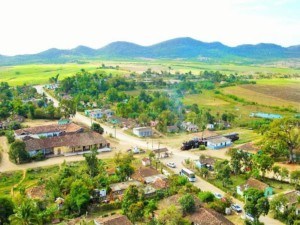 Valle de los Ingenios – East of Trinidad you will find the sprawling Valle de los Ingenios (Valley of the Sugar Mills). Originally, this area was the epicenter of Cuba’s sugar-trade economy. Currently, the lush valley is spotted with the ruins of dozens of sugar mills, abandoned sugar warehouses and historic colonial manors and slave dwellings. The best way to see the valley is with a horseback riding tour which your casa landlord will be able to organize. Prices are approximately 20 CUC for 5 to 6 hour tour, covering most important sightseeing locations.
Valle de los Ingenios – East of Trinidad you will find the sprawling Valle de los Ingenios (Valley of the Sugar Mills). Originally, this area was the epicenter of Cuba’s sugar-trade economy. Currently, the lush valley is spotted with the ruins of dozens of sugar mills, abandoned sugar warehouses and historic colonial manors and slave dwellings. The best way to see the valley is with a horseback riding tour which your casa landlord will be able to organize. Prices are approximately 20 CUC for 5 to 6 hour tour, covering most important sightseeing locations.
 El Mirador Restaurant – About 5 kms (3 miles) east of Trinidad, along the Circuito Sur highway, is the El Mirador restaurant / bar. The establishment is perched on a hill and offers 360 degree views of the Valle de los Ingenios (Valley of the Sugar Mills). Drinks are cheap and food is moderately prices, but it is completely free to simply walk up the long flight of stairs to the restaurant and enjoy the views of the valley from the open terrace. It will definitely give you some perspective on the grandiosity of the area and the importance that sugar production once had for Cuba’s economy.
El Mirador Restaurant – About 5 kms (3 miles) east of Trinidad, along the Circuito Sur highway, is the El Mirador restaurant / bar. The establishment is perched on a hill and offers 360 degree views of the Valle de los Ingenios (Valley of the Sugar Mills). Drinks are cheap and food is moderately prices, but it is completely free to simply walk up the long flight of stairs to the restaurant and enjoy the views of the valley from the open terrace. It will definitely give you some perspective on the grandiosity of the area and the importance that sugar production once had for Cuba’s economy.
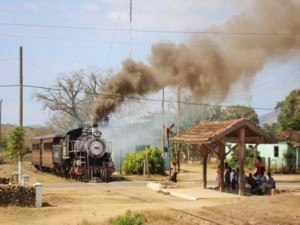 Antique Train – A fun way to experience the valley is to take a ride on the antique steam train. The train departs from Trinidad and slowly makes its way through the valley, going through several tunnels and over a few iron bridges, eventually stopping at the famous Manaca Iznaga estate and the hacienda Guachinango, which will be discussed in the next section. Although a ride on this antique engine is enjoyable, the train is highly unreliable. The train has scheduled departures every day, leaving Trinidad at 9:30am and returning at 2pm. This changes often, due to breakdowns and weather events. Round trip tickets costs 10 CUC and can be purchased directly at the train station in Trinidad, located at the intersection of Calle Antonio Guiteras and General Lino Perez, in the western end of the town.
Antique Train – A fun way to experience the valley is to take a ride on the antique steam train. The train departs from Trinidad and slowly makes its way through the valley, going through several tunnels and over a few iron bridges, eventually stopping at the famous Manaca Iznaga estate and the hacienda Guachinango, which will be discussed in the next section. Although a ride on this antique engine is enjoyable, the train is highly unreliable. The train has scheduled departures every day, leaving Trinidad at 9:30am and returning at 2pm. This changes often, due to breakdowns and weather events. Round trip tickets costs 10 CUC and can be purchased directly at the train station in Trinidad, located at the intersection of Calle Antonio Guiteras and General Lino Perez, in the western end of the town.
 Manaca Iznaga Estate – Continuing east, along the Ciruito Sur highway a further 10 kms from the El Mirador lookout, you will find the Manaca Iznaga estate. The 18th century plantation was owned by Pedro Iznaga, one of the richest men in Cuba who made his fortune mostly in slave trafficking. The estate is well preserved and one of the most popular sightseeing destinations in the area. The main draw is the Iznaga Tower, which is 45 meters tall. It was used to oversee the slaves in the plantation and as a symbol of the Iznaga family’s power and wealth. Originally the tower had a large bell at the top. This bell is now on display at the base of the tower. The cost to walk up to the top of the tower is 1 CUC. The colonial Iznaga estate house faces the tower and has been converted into a restaurant. Also on the estate grounds are some slave dwellings in original condition. Most of the small houses beside the estate were former slave dwellings which have since been renovated and are currently occupied by town locals. The antique steam train has a stop just beside the estate.
Manaca Iznaga Estate – Continuing east, along the Ciruito Sur highway a further 10 kms from the El Mirador lookout, you will find the Manaca Iznaga estate. The 18th century plantation was owned by Pedro Iznaga, one of the richest men in Cuba who made his fortune mostly in slave trafficking. The estate is well preserved and one of the most popular sightseeing destinations in the area. The main draw is the Iznaga Tower, which is 45 meters tall. It was used to oversee the slaves in the plantation and as a symbol of the Iznaga family’s power and wealth. Originally the tower had a large bell at the top. This bell is now on display at the base of the tower. The cost to walk up to the top of the tower is 1 CUC. The colonial Iznaga estate house faces the tower and has been converted into a restaurant. Also on the estate grounds are some slave dwellings in original condition. Most of the small houses beside the estate were former slave dwellings which have since been renovated and are currently occupied by town locals. The antique steam train has a stop just beside the estate.
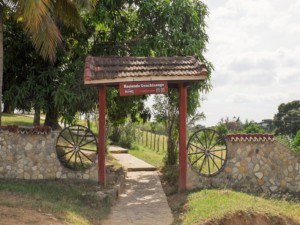 Hacienda Guachinango – This is a well preserved plantation ranch-house which currently operates as a restaurant. It is located in the valley, about 2 kms away from the Manaca Iznaga estate. It is surrounded by lush farmland and there is a small river (Río Ay) that winds through the surrounding fields. The antique steam train stops directly in front of the house every morning. You can easily walk to the Manaca Iznaga estate, along the train track, in about 30 minutes.
Hacienda Guachinango – This is a well preserved plantation ranch-house which currently operates as a restaurant. It is located in the valley, about 2 kms away from the Manaca Iznaga estate. It is surrounded by lush farmland and there is a small river (Río Ay) that winds through the surrounding fields. The antique steam train stops directly in front of the house every morning. You can easily walk to the Manaca Iznaga estate, along the train track, in about 30 minutes.
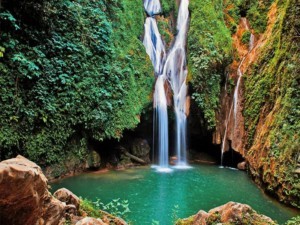 Topes de Collantes – About 5 kms northwest of Trinidad, connected by the Circuito Sur highway, is the massive Topes de Collantes natural reserve park which encompasses the Escambray Mountain range. Within the park, the main attractions are caves, waterfalls, clear blue lakes and rivers and there is ample opportunity for hiking and to see indigenous plants and wildlife. Given the unpredictable weather in the mountains and the steep sloping roads, special vehicles are required to drive to the highest attractions in the park. Certain taxi drivers will offer to make the trip for an additional fee, but breakdowns are common. It is best to visit with an organized excursion. Accommodations within the reserve are also available, at a reasonable cost.
Topes de Collantes – About 5 kms northwest of Trinidad, connected by the Circuito Sur highway, is the massive Topes de Collantes natural reserve park which encompasses the Escambray Mountain range. Within the park, the main attractions are caves, waterfalls, clear blue lakes and rivers and there is ample opportunity for hiking and to see indigenous plants and wildlife. Given the unpredictable weather in the mountains and the steep sloping roads, special vehicles are required to drive to the highest attractions in the park. Certain taxi drivers will offer to make the trip for an additional fee, but breakdowns are common. It is best to visit with an organized excursion. Accommodations within the reserve are also available, at a reasonable cost.
Trinidad Nightlife
Casa de la Musica – An outdoor music and dance venue, located on a steep, sloping street, just off the Plaza Mayor in the Old Town. Drinks are cheap and the music plays day and night. There are tables and chairs scattered around, and many people simply sit on the steps leading up the hill. The atmosphere is very relaxed and offers a good chance to meet up with locals and practice your dance steps. There is no entrance fee. Just walk around and enjoy yourself.
Casa de la Trova – Located one block east of the Plaza Mayor, this indoor music and dance hall hosts nightly shows with popular Cuban musical groups. There is a large outdoor terrace, usually filled with locals and tourists. The entrance fee is 1 CUC for foreigners.
Disco Ayala – Located about 6 blocks northeast of the Plaza Mayor, on a small hill, beside the Hotel Las Cuevas, just on the outskirts of town. Disco Ayala is a large nightclub built inside a natural cave. Enjoy salsa and reggaeton as you dance the night away in this cavernous setting. The entrance fee is 3 CUC and includes 1 drink.
Want to learn about Havana and how to explore Cuba like a local?
Download the Best Cuba and Havana Travel guide: Real Havana.

